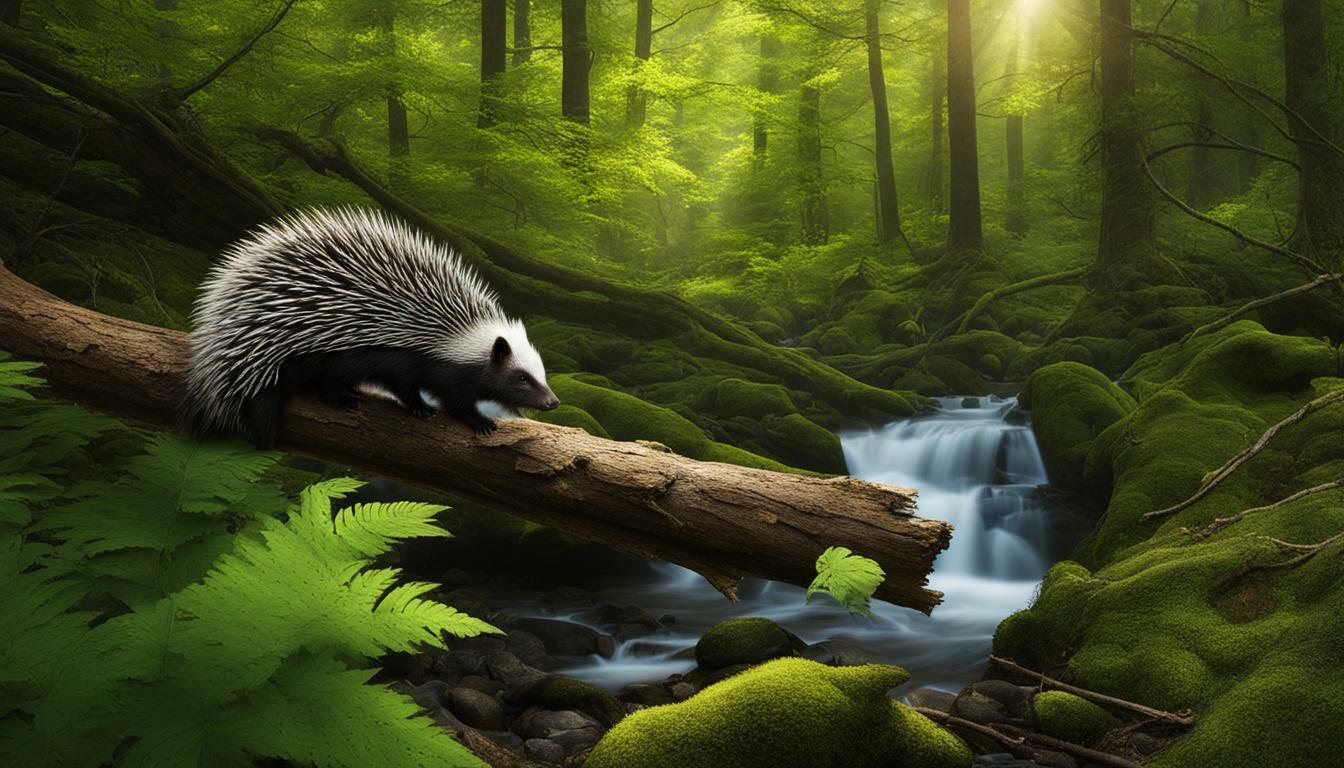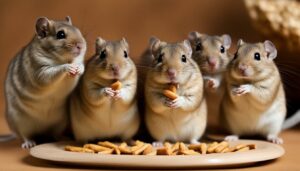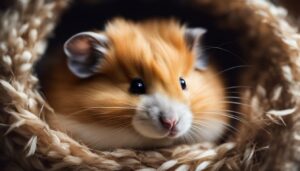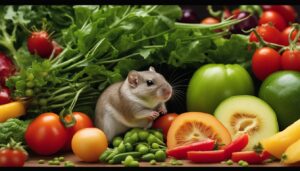Maine is home to a diverse range of wildlife, including porcupines. The North American porcupine is the sole species of porcupine found in Maine, and it holds the title for being the largest of all porcupines.
These impressive creatures are skilled climbers and often spend their time in trees. With tails designed to aid in gripping tree trunks, porcupines navigate their arboreal habitats with ease.
Porcupines possess a natural defense mechanism in the form of 20,000 or more quills covering their bodies.
Although they do not throw their quills, these sharp spines can easily penetrate predators that get too close.
Key Takeaways:
- The North American porcupine is the sole species of porcupine found in Maine.
- Porcupines have around 20,000 quills that serve as their defense mechanism.
- They are nocturnal animals and are most active at night.
- Mating occurs in autumn, and a single baby porcupine is born after a seven-month gestation period.
- Porcupines prefer forested areas with dense conifers as their habitat.
- It is advised to keep dogs away from porcupines to avoid the risk of quill injuries.
However, porcupines are primarily herbivores and are more focused on their diet. Their food sources include wood, natural bark and stems, fruit, leaves, and the buds that bloom in springtime.
Being nocturnal creatures, porcupines are most active during the night. They have a stable population in Maine and play a vital role within the state’s wildlife ecosystem.
While they may appear passive, porcupines possess defensive mechanisms such as clacking their teeth, emitting a strong odor, and swinging their tails to deter threats.
It is worth noting that porcupines have predators, including fishers and cougars. Mating takes place in autumn, and after a gestation period of seven months, a single baby porcupine, known as a porcupette, is born.
Porcupines prefer forested areas with dense conifers as their habitat. They often use the same den year after year and continue their nocturnal activities.
For those living in Maine, it is important to keep dogs away from porcupines, as encounters can result in the dog getting quills embedded in its skin.
Porcupines do not hibernate but may sleep during cold weather and remain active in milder conditions. While their feeding habits can cause damage to tree stands, they also provide opportunities for insects to enter trees, attracting foraging birds.
Porcupines are known to be attracted to salt and may chew on items that have been soaked in human perspiration.
The North American Porcupine in Maine
The North American porcupine is the largest species of porcupine found in Maine. Known for their distinctive quills, they are an integral part of Maine’s diverse wildlife population.
These fascinating creatures are excellent climbers and spend much of their time in trees, using their tails to help grip tree trunks while navigating their arboreal habitat.
With around 20,000 or more quills on their bodies, porcupines in Maine rely on these sharp, barbed quills for defense.
Contrary to popular belief, porcupines do not throw their quills, but rather they stick to any predators that get too close.
This unique adaptation serves as a formidable defense mechanism, deterring potential threats from approaching.
In terms of diet, porcupines in Maine are herbivores and feed on a variety of vegetation. They consume wood, natural bark and stems, fruit, leaves, and springtime buds.
Their feeding habits can cause damage to tree stands, but it also serves an important role in allowing insects to enter trees, attracting foraging birds.
Porcupines in Maine are generally passive creatures, but they can defend themselves when threatened. In addition to their quills, they use other tactics, such as clacking their teeth, emitting a strong odor, and swinging their tails.
It is important to note that encounters between porcupines and dogs can result in the dog getting quills embedded in its skin, so it is advised to keep dogs away from porcupines.
The population of porcupines in Maine is stable, and these unique creatures play a significant role in the ecosystem.
While their feeding habits may cause some damage to trees, it also creates opportunities for other organisms.
Furthermore, their preference for salt often leads them to chew on items that have been soaked in human perspiration, adding to the curiosity and wonder of these remarkable animals.
Porcupine Habitat and Behavior in Maine
Porcupines in Maine inhabit forested areas, particularly those with thick coniferous trees. These resilient creatures have adapted to thrive in the state’s diverse wildlife-rich landscape.
Porcupines often select dens within the same habitat year after year, creating a sense of familiarity and security.
Primarily active at night, porcupines use their strong limbs and sharp claws to climb trees effortlessly.
They are known for their exceptional tree-gripping ability, thanks to their tails, which act as a natural grip on tree trunks.
This enables them to forage on the tender bark, stems, leaves, and springtime buds that form a significant part of their herbivorous diet.
Porcupine Diet
Porcupines are herbivores and have a diverse diet that includes the bark of trees, wood, stems, fruit, leaves, and springtime buds.
Their ability to gnaw through tough vegetation is facilitated by their sharp incisors, which continuously grow throughout their lives.
This allows them to effectively consume a variety of plants, making them an important contributor to the ecosystem.
Nocturnal Behavior and Predators
Porcupines in Maine are predominantly nocturnal and have several predators in their ecosystem. Being nocturnal means that these fascinating creatures are most active during the night.
The cover of darkness offers them protection from potential threats and allows them to move about more freely.
While porcupines do face predators in Maine, their impressive defensive mechanisms, such as quills, help keep them safe.
Porcupine predators in the region include fishers and cougars, which have the ability to take down these spiky creatures.
However, most predators learn to avoid porcupines due to the painful consequences of getting quilled.
Despite the presence of predators, the population of porcupines in Maine remains stable. These herbivores have adapted to living in forested areas, with thick conifers being their preferred habitat.
They often use the same den year after year and are mostly active at night, feeding on vegetation, including the bark of trees.
While porcupines may cause damage to tree stands through their feeding habits, they also play a role in the ecosystem.
By allowing insects to enter the trees, porcupines attract foraging birds, contributing to the overall biodiversity of the area.
It is advised to keep dogs away from porcupines, as encounters can result in the dog getting quills embedded in its skin.
Porcupines do not hibernate but may sleep through cold snaps and remain active in mild weather. Their attraction to salt may lead them to chew on items that have been soaked in human perspiration.
Reproduction and Offspring
Porcupines in Maine mate in autumn, and after a gestation period of seven months, a single baby porcupine, called a porcupette, is born.
These adorable offspring are covered in soft red fur and already have quills, although they are not as developed or sharp as those of adults.
Pups or Porcupettes are born with their eyes open and are able to move around shortly after birth.
The mother porcupine provides care and protection to her porcupette during the first few weeks of its life.
She nurses her young and helps it develop the necessary skills to survive in the wild. The porcupette begins to explore its surroundings and gradually starts to eat solid food, transitioning from its mother’s milk to a diet of plants and tree bark.
Porcupines have a slow reproductive rate, with females typically producing a single offspring per year.
The mother and porcupette form a close bond, often remaining together for several months. As the porcupette grows and becomes more independent, it will eventually venture off on its own to establish its territory.
Overall, the reproduction process of porcupines in Maine is fascinating. It showcases the adaptability and resilience of these unique creatures as they continue to thrive in their natural habitat.
| Gestation Period | 7 months |
|---|---|
| Number of Offspring | 1 |
| Offspring Name | Porcupette |
| Offspring Characteristics | Soft red fur, developing quills |
| Maternal Care | Nursing, protection, and teaching survival skills |
Porcupine Interactions with Humans
It is important to be cautious of encounters between dogs and porcupines in Maine. Porcupines have a natural defense mechanism that can cause significant harm to curious pets.
When a dog gets too close to a porcupine, the quills on the porcupine’s body can become embedded in the dog’s skin, causing pain and potentially leading to infection if not promptly addressed.
If you find yourself in a situation where your dog has encountered a porcupine, it is crucial to remain calm and take immediate action to minimize the damage.
Attempting to remove the quills yourself can be dangerous and may result in further injury to your dog. It is recommended to seek immediate veterinary assistance to ensure the safe and proper removal of the quills.
“When a dog gets too close to a porcupine, the quills on the porcupine’s body can become embedded in the dog’s skin, causing pain and potentially leading to infection if not promptly addressed.”
In order to prevent encounters between dogs and porcupines, it is advised to keep dogs on a leash or within a confined area when exploring forested areas.
Porcupines are generally passive creatures and will try to avoid confrontation if given the opportunity. By being mindful of their presence and keeping dogs under control, you can help minimize the risks of porcupine encounters.
Being aware of the potential risks and taking the necessary precautions will ensure a safer and more enjoyable experience for both dogs and porcupines in Maine’s diverse wildlife habitat.
Porcupine Impact on Trees and Ecosystem
Porcupines play a role in the ecosystem by influencing tree stands and attracting foraging birds. With their unique feeding habits, porcupines can cause damage to tree stands, particularly by gnawing on the bark.
While this can be detrimental to individual trees, it also creates opportunities for other organisms.
By stripping bark from trees, porcupines create openings for insects to enter the trees. These insects, in turn, attract foraging birds that rely on them as a food source.
This dynamic interaction between porcupines, trees, insects, and birds contributes to the overall biodiversity and balance of the ecosystem.
While the impact of porcupines on trees may seem destructive, it is important to recognize their role within the ecosystem. Their feeding habits maintain a delicate balance between trees, insects, and birds, ultimately supporting a healthy and diverse ecosystem.
Survival Strategies and Adaptations
Porcupines in Maine have developed various strategies and adaptations to survive in their environment.
One of their most well-known characteristics is their dense coat of quills, which serve as a formidable defense mechanism.
These quills are sharp and barbed, making it difficult for predators to attack them without getting injured.
When threatened, a porcupine will raise its quills and may lash out with its tail, hoping to deter any potential danger.
Another adaptation that helps porcupines survive in Maine is their ability to climb trees. They have strong claws and a prehensile tail that acts as an anchor, allowing them to navigate the branches with ease.
By spending much of their time in trees, porcupines can avoid ground-dwelling predators and have access to a steady food source.
Porcupines are herbivores and their diet primarily consists of vegetation, including the bark of trees. This feeding behavior has led to an adaptation in their teeth structure.
Their incisors grow continuously throughout their lives, enabling them to constantly gnaw on tough plant material.
Additionally, their digestive system has evolved to efficiently extract nutrients from a high-fiber diet.
Porcupines in Maine have also adapted to their nocturnal lifestyle. They are most active during the night, which reduces their exposure to diurnal predators.
Their eyesight is well-suited for low light conditions, enabling them to navigate their environment and search for food even in darkness.
Conclusion
Porcupines are a fascinating part of Maine’s wildlife, contributing to the state’s rich and diverse ecosystem.
The North American porcupine, the only species of porcupine found in Maine, is the largest of its kind.
With their impressive climbing abilities, porcupines spend much of their time in trees, using their tails to grip tree trunks.
These unique creatures are covered with over 20,000 quills, which they use for defense against predators.
Porcupines in Maine have a varied diet, consisting of wood, bark, stems, fruits, leaves, and springtime buds.
As nocturnal animals, they are most active at night, relying on their quills for protection. While they do not throw their quills, they have the ability to detach and embed them in predators that get too close.
Despite their herbivorous nature, porcupines can defend themselves by clacking their teeth, emitting a strong odor, and swinging their tails.
The population of porcupines in Maine remains stable, ensuring their continued presence in the state’s wildlife.
These fascinating creatures mate in autumn, and after a gestation period of seven months, a single baby porcupine, known as a porcupette, is born.
Porcupines prefer forested areas with thick conifers as their habitat, often using the same den year after year.
It is important to keep dogs away from porcupines, as encounters can result in painful quill embedment.
Although porcupines do not hibernate, they may sleep through cold snaps and remain active during mild weather conditions.
While their feeding habits can cause damage to tree stands, it also allows insects to enter the trees, attracting foraging birds.
Additionally, porcupines are attracted to salt and may chew on items that have been soaked in human perspiration.
FAQ
Are porcupines found in Maine?
Yes, porcupines are indeed found in Maine. The North American porcupine is the only species of porcupine that lives in Maine and it is the largest of all porcupines.
What do porcupines eat?
Porcupines in Maine eat wood, natural bark and stems, fruit, leaves, and springtime buds.
Do porcupines throw their quills?
No, porcupines do not throw their quills. The quills stick to predators when they get too close.
When are porcupines active?
Porcupines in Maine are nocturnal animals and are active at night.
What predators do porcupines have?
Predators of porcupines in Maine include fishers and cougars.
How do porcupines defend themselves?
Porcupines can defend themselves by using their quills and by clacking their teeth, emitting a strong odor, and swinging their tails.
How do porcupines reproduce?
Porcupines mate in the autumn, and after a gestation period of seven months, a single baby porcupine, called a porcupette, is born.
Where do porcupines live in Maine?
Porcupines in Maine live in forested areas with thick conifers being their preferred habitat.
Are porcupines a threat to dogs?
Yes, encounters with porcupines can result in dogs getting quills embedded in their skin, so it is advised to keep dogs away from porcupines.
Do porcupines hibernate?
Porcupines do not hibernate but may sleep through cold snaps and remain active in mild weather.
What impact do porcupines have on trees and the ecosystem?
Porcupines’ feeding habits can cause damage to tree stands, but it also allows insects to enter the trees, attracting foraging birds. They play a role within the ecosystem.




